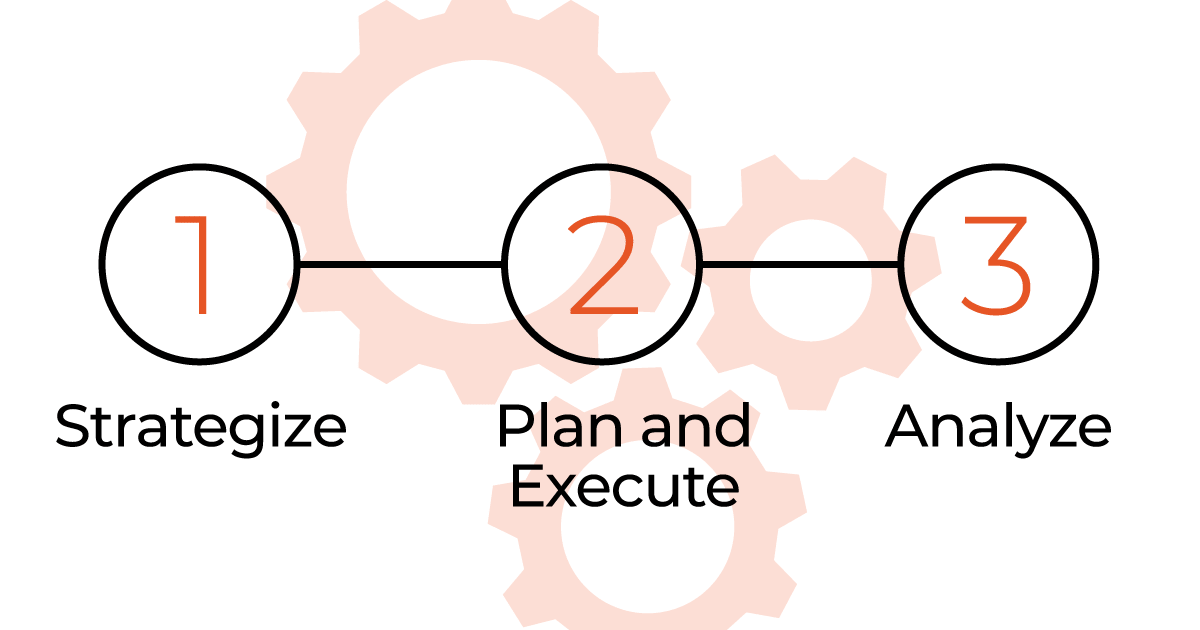In my recent posts, I covered topics from Finch’s Recharge Your Approach to eCommerce Promotions webinar, including how to use buyer psychology in your promotions and how to use different eCommerce promotion ideas. In this post, I cover how to maximize your sales promotion planning process.
Successful Promotions Need a Successful Sales Promotion Planning Process
Using buyer psychology and picking the right mix of promotion types are only the start of successful eCommerce promotions. The finish line is a smart, repeatable process.
And while “process,” is a word that makes many marketers shudder. It’s really your friend. And to make it as easy as possible, we’ve created The 3-Step Guide to Successful eCommerce Promotions infographic.
The guide outlines three steps to follow for all of your promotions.
Step 1: Create a Strategy
For the most successful eCommerce promotions, you want to start with a strategy. Not just any strategy, a multi-month strategy — even one that covers a full year.
You want your strategy to be informed by the data you have about your customers, your past promotions, and your past paid advertising results.
Your strategy will be most effective when you also have specific goals you’re trying to achieve, such as brand awareness, sales, new customers, customer retention, and more.
To get started with a strategy, answer these questions:
- Why are you doing your promotions; what is your goal or goals?
- What’s your budget? Even though your manager or CEO may answer this one for you, you want a target budget going in.
- Who do you want to promote to? You may have different audiences for different goals, but include them all in your overall strategy.
- Where do you want to run promotions? The answer to this can be informed by data about your best-performing channels and platforms, those you want to improve on or try, and your budget.
- What types of promotions do you want to run or try, what’s worked well before, and which will best meet your goals?
- When do you want to run promotions? Will you target holidays, seasonal events, do you need to do clearance sales, etc.?
Once you have a strategy, you can start to execute. And never fear, you can absolutely adjust your strategy as you need and gather new data.
Step 2 of a Successful Sales Promotion Planning Process: Plan and Execute
A lot goes into planning and executing a promotion. You need to develop your creative and build your audiences and campaigns. And you most likely advertise your promotions in a variety of ways, including paid ads, on your site, email, social media, blogs, and more.
You don’t want to stop at planning and executing your promotions though. You want to take action during and after your promotions as well.
While your promotion is running, A/B test your ads to determine what works best. For paid advertising, check your bids and your budget daily to make sure you don’t overspend.
After your promotion ends, adjust your bids back and analyze your data. If you want help, Finch offers full paid advertising strategic services and an Advertising Management Platform with actionable, data-driven Insights reporting available to you 24×7.
Step 3: Analyze Your Data
In order to drive your next round of promotions effectively, you want to always analyze your data. The main question is did you meet your goal? Other data to gather includes:
- Did you hit your target ACoS/ROAS?
- Which channels or ad platforms delivered the best results for you?
- Which creatives converted best?
- What were your most successful keywords and product categories?
With that, and other, information in hand, you can determine how one campaign compared to another and decide where to adjust in the future.
Learn even more about a successful eCommerce sales promotion planning process in the infographic:






